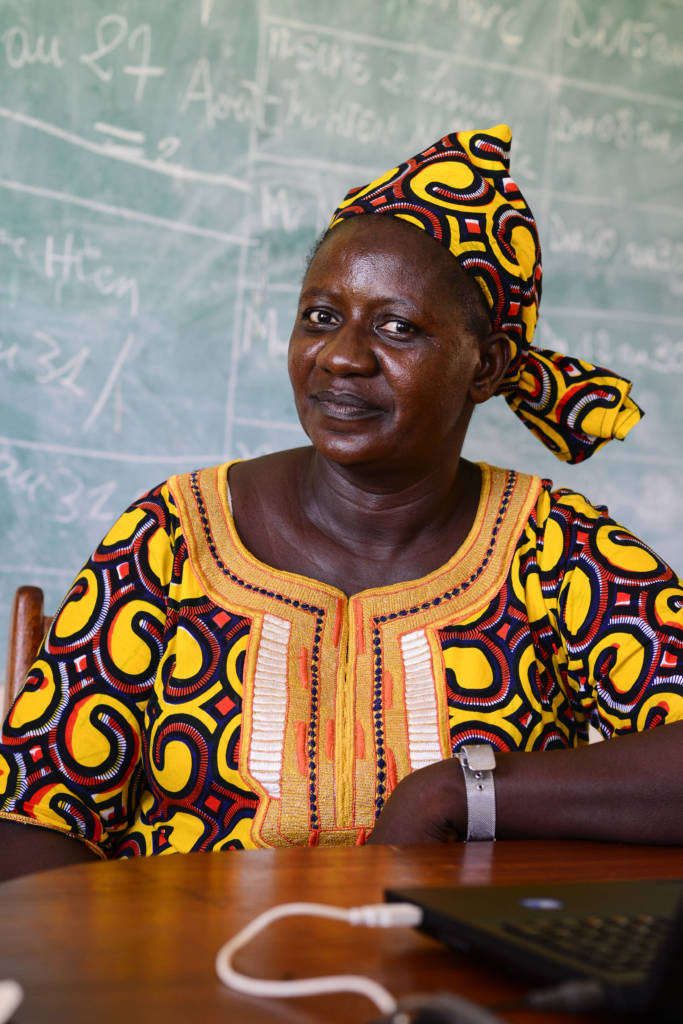Cash Cycle
How the Head of a cooperative contributes to food security by introducing a sophisticated credit system
Anyone growing grain in Burkina Faso usually sells it right after harvesting. Bills for school fees, medical treatment and many other necessities need to be settled. Just a few months down the line, own supplies run out and smallholders suddenly have to buy food from others. Investments in new tools, fertilisers and crop protection are also looming — all of which are important prerequisites for a promising new planting season.

Félicité Yaméogo’s credit system is successful.
Photo: © GIZ / Jörg Böthling
The solution? — Selling offseason!
Félicité Yaméogo is the head of the COPSA-C (Cooperative de Prestation de Service Agricoles) cooperative, which offers its 3,000 members — 40% of them women — agricultural services supported by the Green Innovation Centre. She has found a solution for this dilemma of the farmers, a ‘warehouse receipt system’.
“We were one of the first cooperatives in Burkina Faso to introduce this system a few years ago,” she says proudly. “Farmers can store part of their harvest in one of our Cooperative’s warehouses. That then serves as collateral for the bank, which gives the farmers a loan in return. The farmers sell the rest of their harvested crops on the market. After a few months when their supplies at home are used up, they can reclaim the stored part.”
When the farmers get their supplies back, market demand is usually higher than at harvest time, so higher sales prices can be achieved. This has an effect similar to a second harvest. The farmers can not only pay back the loan from their profits but also cover their expenses for the next season.
This system enables them to get a loan other than from private individuals, who lend them money at excessively high interest. Without collateral they usually don’t qualify loans from banks. With the new system, the cooperative negotiates with the bank, getting fair interest conditions for the farmers.
The system is successful: The number of borrowers has risen rapidly since the test phase began in 2009 – around 400 sacks of grain were stacked in that year. Today more than ten times that number of sacks are stored away per season.
“Things must go on”
Félicité’s eyes light up when she talks about her work. The 49-year-old grew up with agriculture. “What others learned at the university, I learned in the fields,” she says. “Later, I worked in the development projects of various foreign NGOs and ended up at COPSA-C. I can also see myself here in the future because things must go on. We need projects that will still work when the donors have gone. This is the only way to create on-site, long-term perspectives for our people.”

